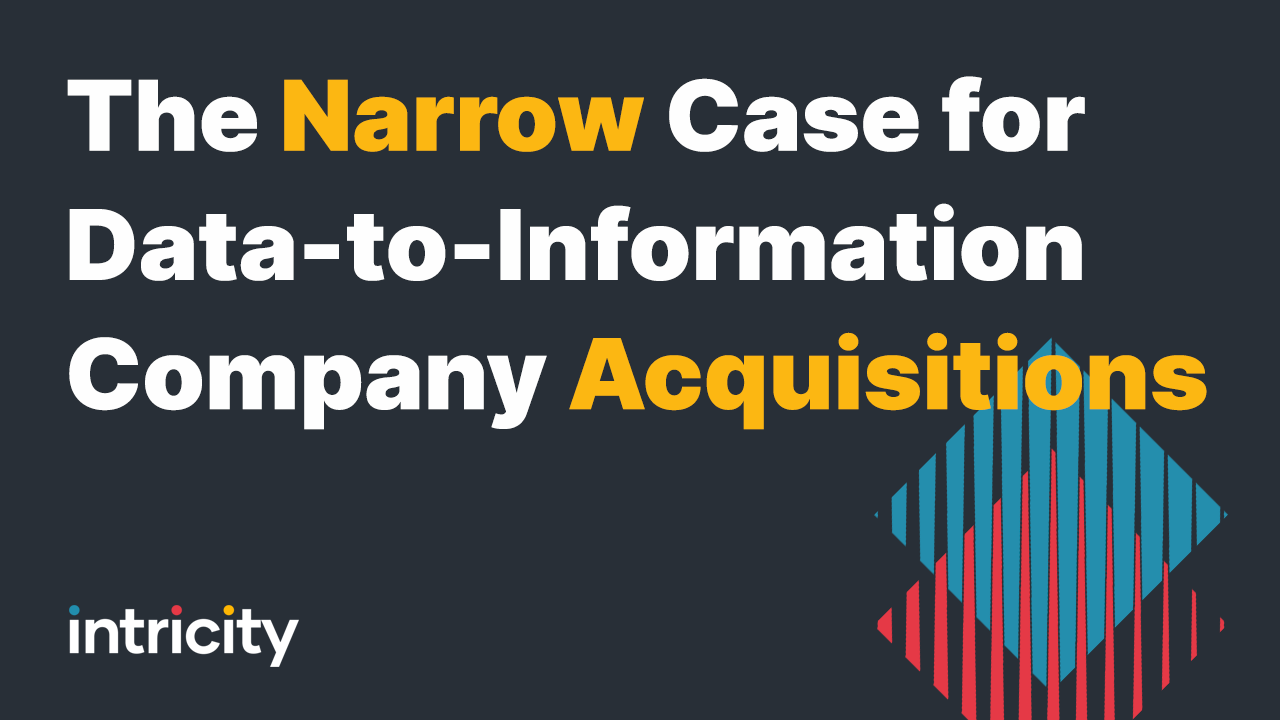For decades, manufacturers basically had a race to become the cheapest at what they produce, because they had little leverage when it came to differentiation. But as measurement devices and back-end data systems have modernized; a whole new world of opportunity has opened up. This is because the manufacturer's products could be combined with measurement devices, which gave them a voice. The voice of all these devices out there is what we call the Internet of Things. (or IoT)
Now it’s not just manufacturers that benefit from IoT. For example, insurance companies are letting customers reduce their coverage costs if they show good driving in a monitored car. By using a device that collects the data about people’s driving habits, insurance companies can more accurately predict coverage rates.
So, there are a lot of companies exploring IoT for their various products. But one of the most common problems Intricity has found is that companies leverage their old practices and technologies to tackle the new domain of IoT. This can be a big mistake. Not only can companies miss big opportunities, but it can make IoT much more expensive than it needs to be.
I wanted to share some ideas on how to avoid a mess with your IoT project.
- Get a startup mentality. This is probably the most important piece of advice I can give. This is NOT a traditional IT project. Starting your IoT by purchasing thousands of dollars in hardware and thousands of dollars in software is the WRONG thing to do. Most startups these days don’t even own a server. They live in a serverless world. Additionally, you need to treat your project like a startup would. Get agile, use the latest tactics to speed up the process, get out of the corporate roadblock mentality.
- Before you start development, be sure to appropriately identify the Efficiency Innovation and/or the Disruptive Innovation in detail. (Efficiency Innovations should be able to answer the cheaper, faster, better benefits. Disruptive Innovations should be able to answer your product differentiation opportunities) You really shouldn’t even start your IoT project without a well-defined strategy and its bridge to its tactical deployment.
- Don’t allow a product vendor to drive the agenda. Make sure you take the time to evaluate the landscape you want to deploy and ensure that landscape has direct ties to the Innovations your company has planned. THEN and only then, should you be bringing in the product vendors. Far too many times, Intricity has been asked to untangle a mess because the solution was pigeonholed into a vendor’s agenda
- Be judicious about the legacy baggage you decide to include. In an IoT project, you’re going to marry some of your old processes with new processes. However, don’t forget that some of those old processes may be redundant as a result of deploying IoT, so you’ll need a logical solution architecture that weighs the “must-have” legacy processes to be successful.
- Be prepared for more data. Manufacturing companies for the most part can hum along with a very small data footprint. However, when they deploy IoT they are immediately stunned by the wave of data. The IoT solution architecture should have a dynamic way of growing the data footprint with little impact on the IT department.
These are just 5 suggestions, but there are many more. Intricity has an entire IoT map of tasks that spans from the strategy to the technical deployment. I recommend you take a look at one of our recent project case studies linked here in the video, and then talk with one of our specialists.


